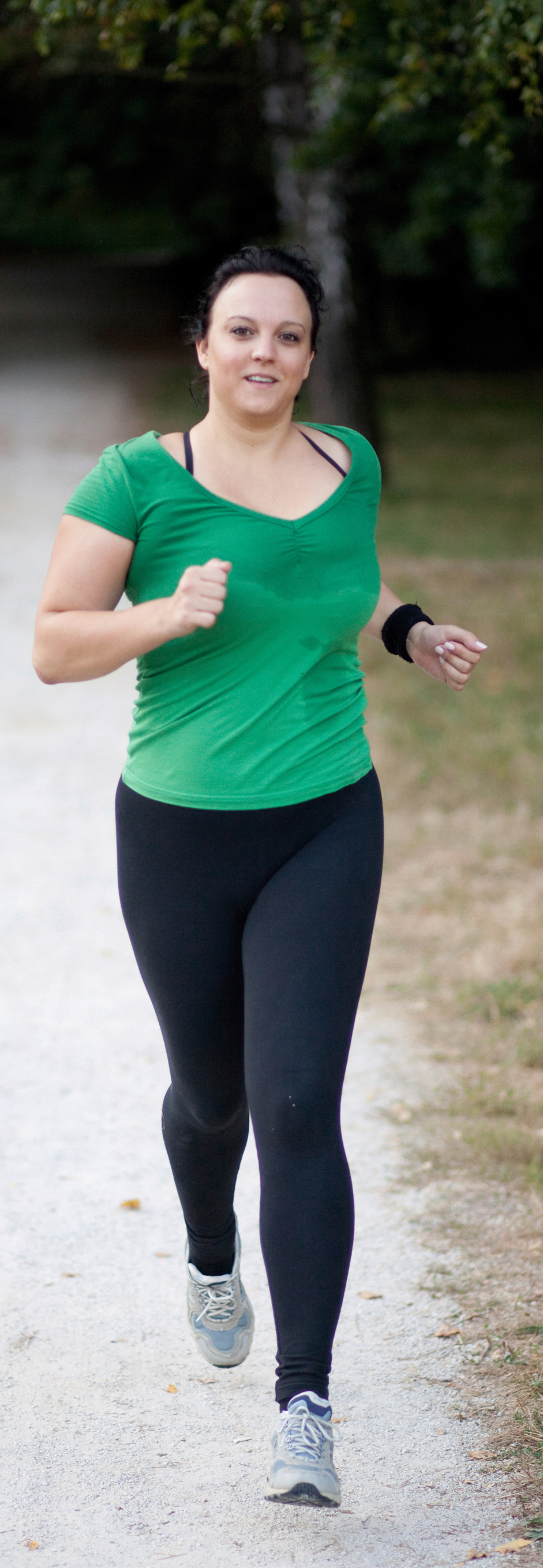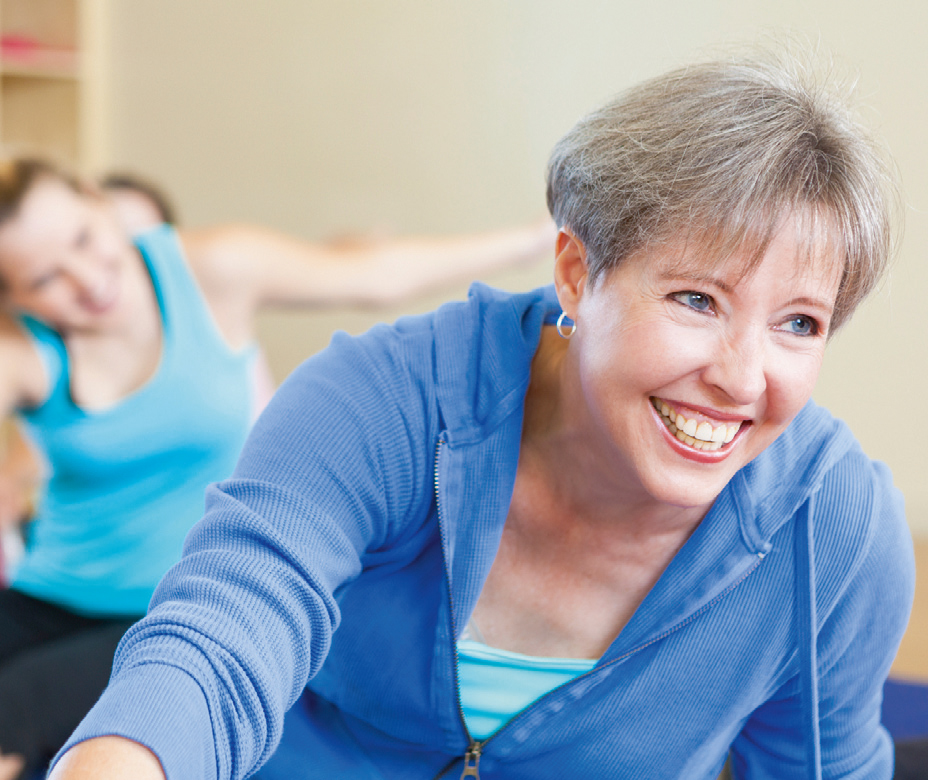Go girls go!
In Conditions
Follow this topic
Bookmark
Record learning outcomes
 Public health experts are increasingly concerned about lack of activity among the population, and among girls in particular. We look at the various initiatives underway to inspire women and girls to get exercising
Public health experts are increasingly concerned about lack of activity among the population, and among girls in particular. We look at the various initiatives underway to inspire women and girls to get exercising
How many of us can honestly admit to shoving aside all the many demands on our time and doing the recommended 150 minutes of moderate physical activity every week? We all know that exercise is good for us, yet statistics continue to show that many of us just aren't reaching the goals set and, when it comes to taking part in sport, the gap between men and women remains wide.
Research by Sport England has found that in the 14-40 age bracket, two million fewer women than men play sport regularly, despite the fact that 75 per cent of females say they want to be more active. Fear of being judged €“ for their appearance, ability or how they choose to spend time on themselves €“ are the major obstacles putting women off exercising, the research found. Sport England's 'This Girl Can' campaign is aimed at inspiring more women and girls to get active.
The campaign strives to put an end to the stereotypical view that active females are super fit models wearing lycra and looking good in it. It offers a more realistic vision, with images of real women sweating, jiggling and having fun while exercising, alongside slogans such as: 'Sweating like a pig, feeling like a fox'. Since the campaign launched at the start of the year, thousands of women have joined in to share their experiences, celebrate being active and debate attitudes to female sport, with the social media community now topping 290,000.
€The 'This Girl Can' campaign is designed to tackle head on the barriers that stop millions of women being more active,€ says a Sport England spokesperson. €It seeks to tell the real story of women who exercise and play sport by using images that are the complete opposite of the idealised and stylised images of women we are now used to seeing.€
In the community
This is not the only initiative aimed at getting more women and girls physically active. StreetGames, a charity which brings sporting and physical activity opportunities to the doorstep of young people in disadvantaged communities across the UK, runs the 'Us Girls' programme, specifically focusing on young women in the 14-25 age group.
€The reason we are focusing on this group in particular is because when we look at the statistics we see what we call a 'double jeopardy',€ explains Lian Lawrence, an 'Us Girls' programme worker. €The difference between the number of males and females taking part in sport is wide, but statistics show that those living in disadvantaged areas are even less likely to take part in sport and physical activity.€
The headline statistics from Sport England, says Lian, show that across all age groups, about 40 per cent of men take part in sport and physical activity lasting 30 minutes once a week, compared with 31 per cent of women. But among 16 year olds, 73.5 per cent of males take part in this amount of sport or physical activity compared with 47.2 per cent of females.
€That's a very wide gap and even wider if we look at females from disadvantaged socio-economic backgrounds,€ says Lian. There is a top five list of reasons why young women tend not to take part in sport. €Number one is that they have too many other commitments€, explains Lian.
€Number two is that it is too expensive; number three is that they say they don't have anyone to go with; number four is not being confident enough; and number five is that they don't know where to go.€ 'Us Girls' is about trying to overcome these barriers by €looking at the right price; doing the activity in the right place and at the right time and in the right style€, she explains.
For example, project leaders understand that for some girls, the prospect of having to go to a leisure centre might be intimidating, so they try to think a bit more creatively about where to hold sessions. They've also learnt that dance is a popular way of getting girls active because you don't have to be good at sport to partake and everyone starts from the same level.
€'Fun, fitness and friends' is our strapline €“ it's about inclusivity and having fun,€ says Lian. €Our aim is to make people realise that exercise is fun and that it boosts confidence and self-esteem. The hope is that this will have a long lasting result.€
Not just girls
Females are not the only ones guilty of not taking part in enough physical exercise. Inactivity appears to be a €huge€ problem in most European countries, including the UK, according to Dr Kirsten Corder, senior investigator scientist at the Centre for Diet and Activity Research (CEDAR) at the University of Cambridge. €Physical inactivity is one of the leading causes of death in developed counties, estimated to be responsible for 22-23 per cent of coronary heart disease,€ she says. €A lot of research focuses on only girls and women, but activity in all population groups declines throughout childhood and adolescence into adulthood and they are therefore all in need of physical activity promotion.€
The chief medical officer's recommendation is that in order to stay healthy, adults should do 150 minutes of moderate intensity physical activity, 75 minutes of vigorous intensity activity, or a mix of the two, each week. But Stuart Palma, professional adviser at The Chartered Society of Physiotherapy, says: €More than one in four women and one in five men do less than 30 minutes of physical activity a week, so are classified as 'inactive'.€
Dr Corder believes barriers to sufficient activity are, arguably, largely down to our 'western' lifestyle. This includes €dependence on the car, many of us having sedentary jobs, the prevalence of sedentary pursuits in our leisure time such as TV viewing, bad experiences of physical activity growing up, neighbourhood safety preventing outdoor play for children and the high cost of many organised activities and sports€, she explains.
Occupational health
Dr William Bird, GP, physical activity expert and CEO of Intelligent Health, which consults about physical activity strategies, says: €Pretty much the entire universe is designed about being inactive. At work there are lifts, so people aren't using the stairs, and when we welcome someone into our home we say 'take a seat'. That's fine if you need a rest, but we're just not being active any more. There are fewer people walking to school or work and fewer people taking part in sport.€
The problem is two-fold: on one hand, people aren't doing enough aerobic activity and, on the other, people are spending too much time sitting, an issue that is causing increasing concern among public health experts. The British Heart Foundation (BHF) says that statistics show the average person sits for almost nine hours a day. The worry is that if people are sitting for this long, they are unwittingly building up serious health issues such as diabetes, cardiovascular disease and even depression.
€Many people will think along the lines that if I sit at my desk all day I will go to the gym in the evening,€ says Dr Bird. €However, the research shows that that time spent in the gym won't compensate for the damage caused by the eight hours of prolonged sitting. The damage being done in that eight hour period of no activity is irreversible.€
He explains the chain of events: €Every cell in the body has a 'battery' €“ or 'mitochondria' €“ which drives the energy within that cell. The 'battery' is charged up but, if we sit and do nothing, free radicals leak out of it and cause inflammation. Inflammation is implicated in a variety of health issues, including heart disease, dementia and cancer.
If you are sitting for long periods of time, you are creating more free radicals and increasing inflammation in the body.€ People who have desk-bound jobs are now being advised to stand up more at work and to make concerted efforts to move around. Earlier this year, for instance, the BHF teamed up with Get Britain Standing to hold the first 'On Your Feet Britain' challenge, encouraging office workers to spend less time sitting at work by standing while on the phone, standing and taking a break from the computer every 30 minutes or having stand-up meetings.
Even small changes to everyday habits can make a big difference. €About 20 per cent of people do at all,€ says Dr Bird. €This equates to 30 minutes a week, which is basically leaving the house, getting into the car, driving to work, taking the lift, leaving work and walking to the car and driving home. This scenario of doing no activity at all is the most damaging.
€If you can go up from this scenario of 30 minutes a week to 90 minutes a week then the risk for all kinds of long-term conditions, such as heart disease, diabetes, breast cancer and bowel cancer, decreases by between 30 and 40 per cent. You don't have to be an athlete €“ fairly brisk walking, playing a round of golf, walking from the bus stop to home €“ these small adjustments can have a major impact on a person's body and health.€
Walk this way
Indeed, the importance of physical activity for good health is trumpeted in lots of research. A study published in the American Journal of Clinical Exercise, suggests that twice as many deaths could be attributable to lack of physical activity compared with the number of deaths attributable to obesity and that even a modest increase in physical activity could have significant health benefits. The authors estimated that doing exercise equivalent to just a 20 minute brisk walk each day would take an individual from the inactive to moderately inactive group and reduce their risk of premature death by between 16 and 30 per cent.
In addition, research from the University of East Anglia, published in the British Journal of Sports Medicine, suggests that regular outdoor walking in groups can reduce the risk of stroke, coronary heart disease and other life-threatening conditions. It found that people who regularly walk in groups have lower blood pressure, resting heart rate and total cholesterol and that exercise led to a reduction in body fat and body mass index.
€Any exercise is better than none,€ says Sarah Hanson, a lead author of the study. €The issue is how we get people to do it and walking groups offer another way to increase physical activity and improve health.€ The 'group' element is important as people walk further and faster in a group, explains Sarah.
And when people join a walking group, they tend to stick with it, which means the health benefits are ongoing. Sarah believes pharmacies have an important role to play in spreading this message and encouraging participation in walking groups €“ for instance, by stocking health walk brochures. €Walking groups can really complement the health promotion advice that pharmacies give,€ she adds.
Q and A with...
...Stuart Palma, professional adviser at The Chartered Society of Physiotherapy
 Q: What are the most common sporting injuries that pharmacy staff are likely to see?
Q: What are the most common sporting injuries that pharmacy staff are likely to see?
A: €Pharmacists and their staff are likely to see sporting injuries such as sprains to the ligaments and strains to the musculature. Preventing these types of injuries is about preparation and listening to the body.€
Q: What is the latest advice on warming up and down and stretching before and after exercise?
A: €The evidence for both warming up and stretching appears to be inconclusive, but it does appear that research is advising us to predominantly use dynamic stretching techniques and low intensity aerobic activity that mimics the activity that we are warming up for. €As for cooling down, there is little conclusive evidence that a specific cool down will equal big benefits. But there is also no risk or harm in doing it. One definite benefit is the improved venous return that cool downs promote, facilitating the return of blood to the heart and the brain. There is evidence that shows a warm up is more likely to reduce delayed onset of muscle soreness than a cool down.€
Do your bit
So how can health professionals, including community pharmacists, help convince people that even small changes to their lifestyles can help them to achieve significant health improvements? Just telling people the health benefits of doing activity doesn't usually lead to them changing their behaviour, says Dr Corder.
€We need to move from repeating the health benefits of physical activity to instead finding what is important to different individuals or even population groups and work with that to encourage behaviour change. For example, convincing young people that activity is fun is important and will potentially change their opinion about physical activity throughout life so that they want to make space in their busy lives to be active.€

Campaigns are urging girls and women to get active
'Beat the Streets', an initiative thought up by Dr Bird, is about trying to get as many people in a community as active as possible, and its success is down to the fact that it is fun. €It's a game,€ Dr Bird explains. €We give out smartcards through schools, GP surgeries, community pharmacies and libraries, and we have smartcard readers or 'beat boxes' on lamp posts and other strategic places around the neighbourhood.€
€The idea is that people have to walk between these card readers and tap their smartcards on them to register their movement and so accumulate points for their team.€ The higher the number of 'swipes', the more points that people accrue, and points are converted into prizes for local charities. But the real pay off is that people are getting out of their cars and walking to schools and shops.
Dr Bird says: €In just five weeks in Reading, we've gone from zero to 28,000 players and the people of Reading have walked the equivalent of 12 times around the world.€ 'Beat the Streets' will be coming to East London, Basingstoke, Essex and Birmingham in the near future and Dr Bird says it would be great to see pharmacies in those areas helping to hand out the cards.
€It's a positive health message and it also brings people through the door,€ he adds. €Most public health messages are finger waggy €“ do this or you'll die young,€ says Dr Bird. €But people tend to feel that they want to enjoy what they've got now and to live in the moment, and that's why I think we need to make these things fun if we're going to make the changes long-lasting.€
Find more information about 'Beat the Streets' at Intelligent Health. And for more info on the 'This Girl Can' campaign and to get involved in the debate visit This Girl Can.
Physical inactivity is one of the leading causes of death in developed counties
